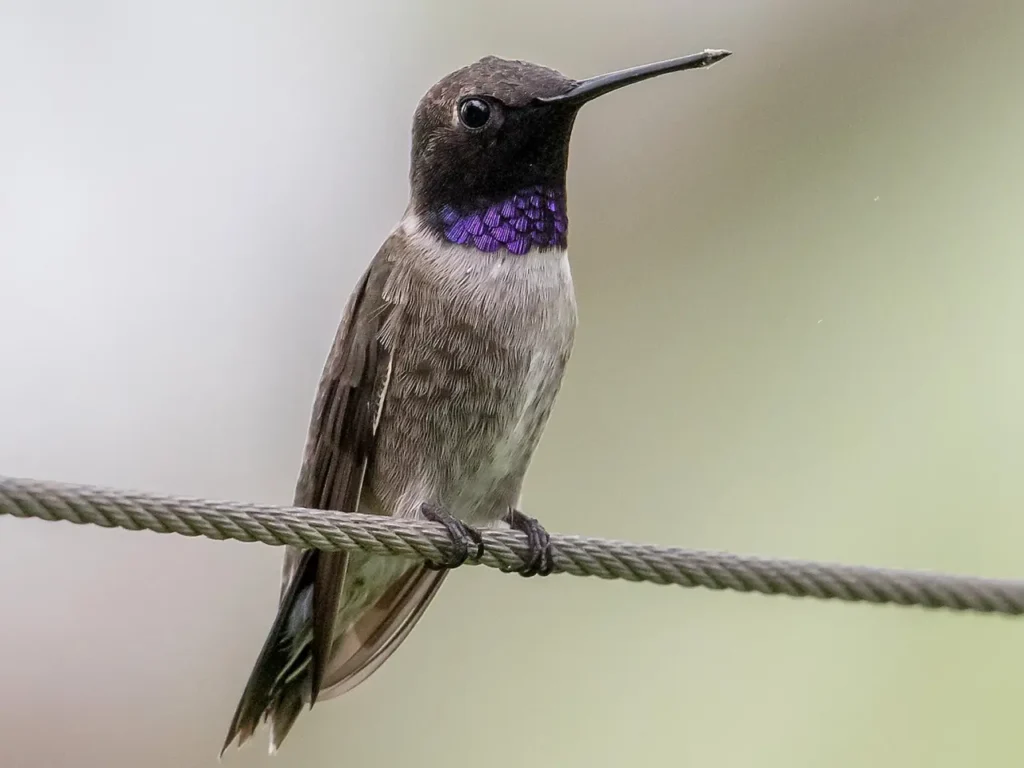In the realm of avian wonders, the Black-Chinned Hummingbird (*Archilochus alexandri*) stands as a dazzling gem of the bird world. With its iridescent plumage, remarkable agility, and delicate presence, this small but vibrant hummingbird has captured the hearts of birdwatchers and nature enthusiasts alike. In this article, we delve into the captivating world of the Black-Chinned Hummingbird, exploring its appearance, behaviors, habitat, and the awe it inspires among those fortunate enough to witness its beauty.
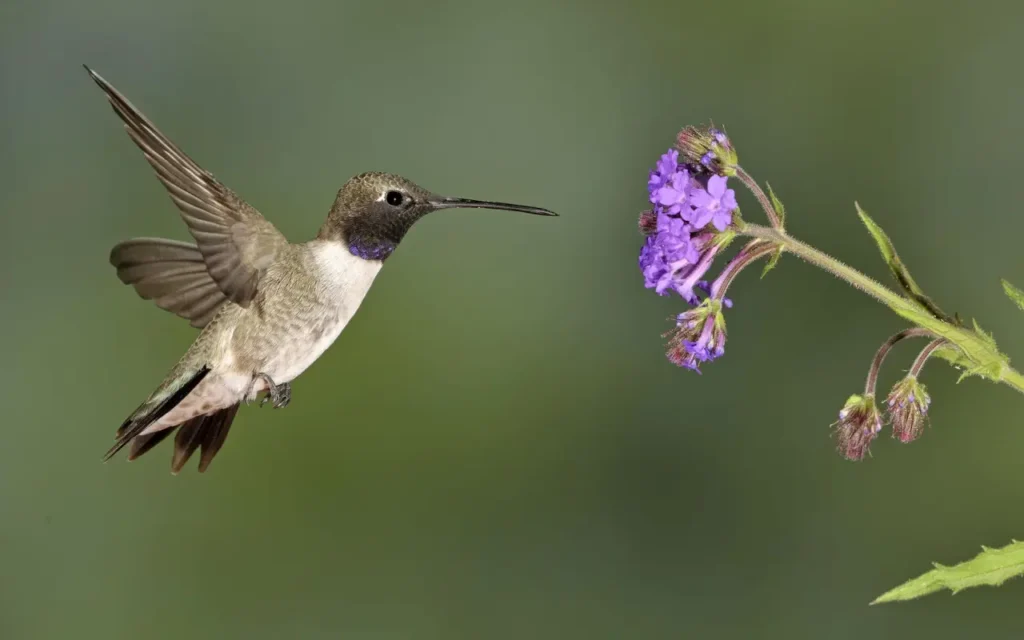
The Black-Chinned Hummingbird derives its name from the dark, iridescent chin that contrasts beautifully with its greenish upperparts. This hummingbird’s vibrant plumage often shimmers with shades of deep green and iridescent purple when caught in the right light. It boasts a slender, agile body with wings that beat at an incredible speed, allowing it to hover in midair and move with remarkable precision.
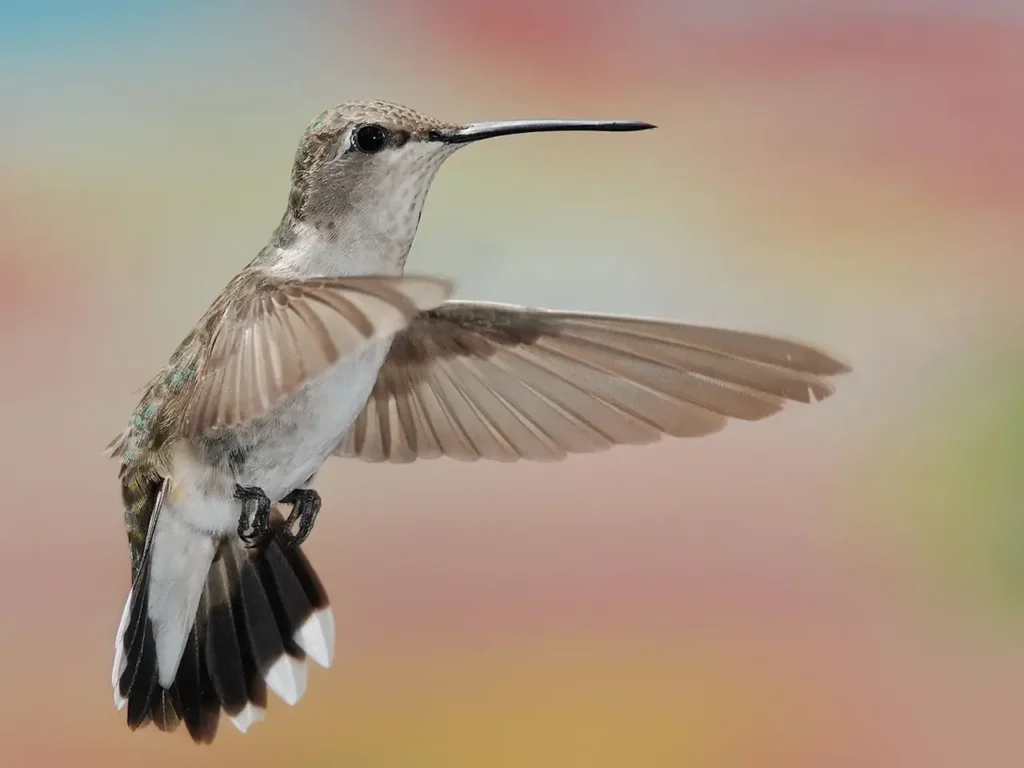
In addition to its distinctive throat color, the male Black-Chinned Hummingbird displays a white collar, giving it an elegant appearance that further enhances its visual appeal. Females, on the other hand, are generally more subtly colored, with greenish-gray upperparts and a pale, speckled throat.
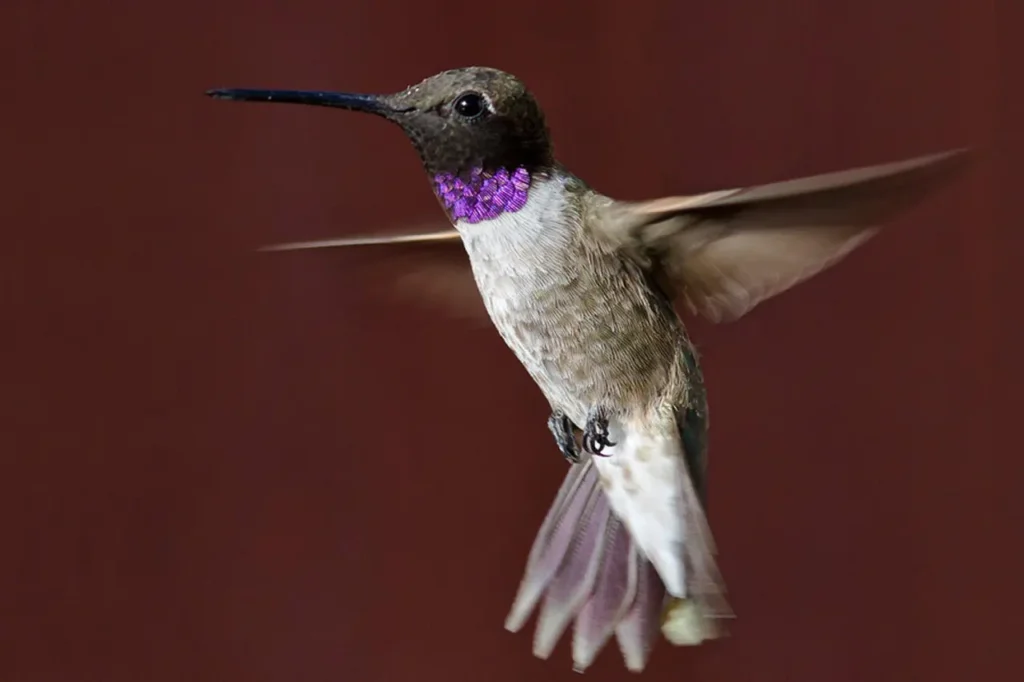
One of the most captivating aspects of the Black-Chinned Hummingbird is its incredible agility and acrobatics in flight. With wings that beat up to 80 times per second, this hummingbird can hover in place, fly forward, backward, and even upside down with astonishing grace. Their flying prowess is not only mesmerizing but also crucial for their survival, as they feed primarily on nectar from flowers.
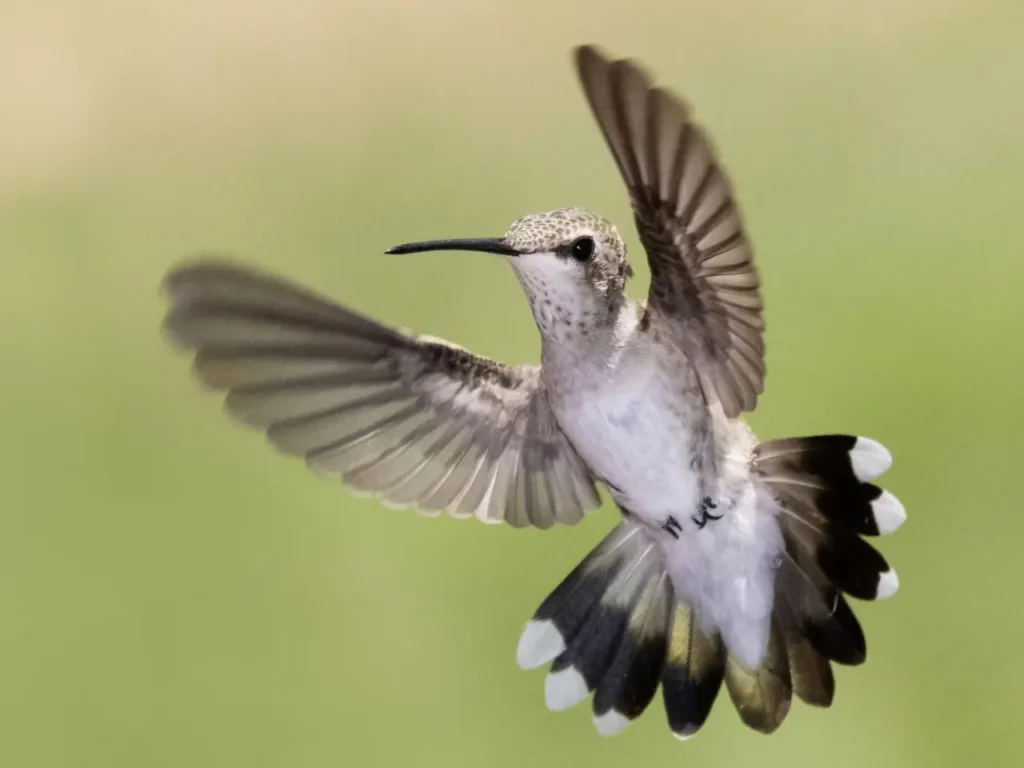
Black-Chinned Hummingbirds are important pollinators, as they transfer pollen from one flower to another while feeding. They also supplement their diet with insects and spiders, which provide essential protein for their energy needs, especially during the breeding season.
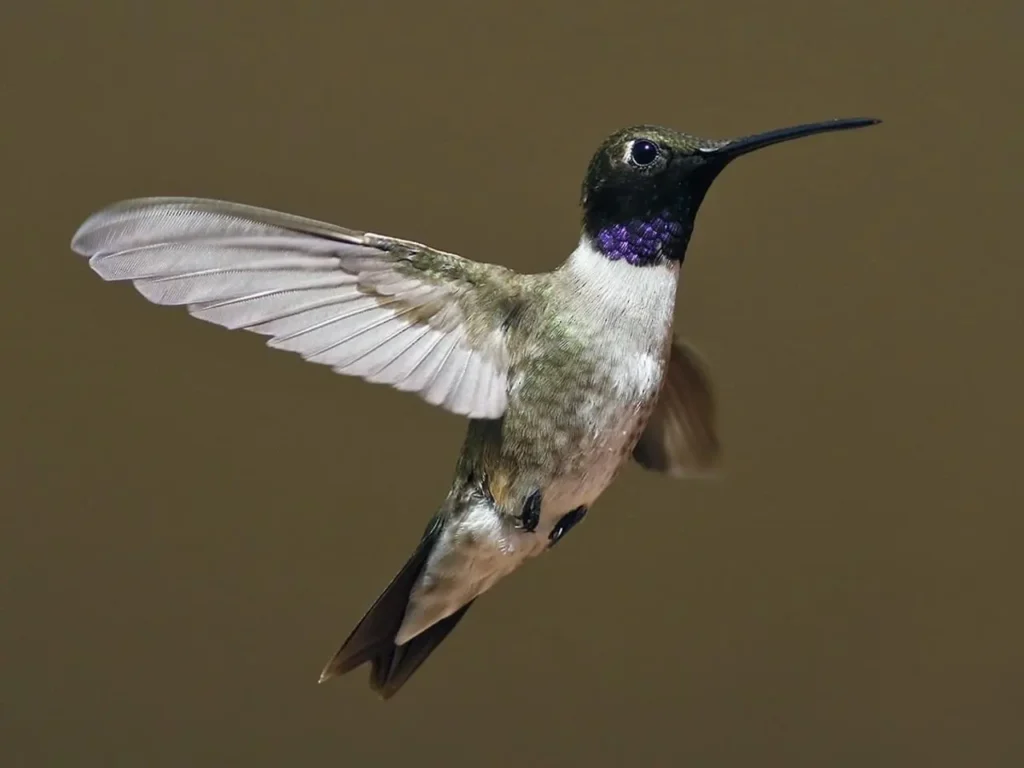
These hummingbirds breed in a variety of habitats, including mountain forests, desert oases, and gardens. The females construct small cup-shaped nests made from plant fibers and spider silk, often placed on branches or in sheltered locations. A clutch usually consists of two eggs, which the female incubates for about two weeks. After hatching, the chicks are cared for by the female until they fledge and are ready to explore the world on their own.
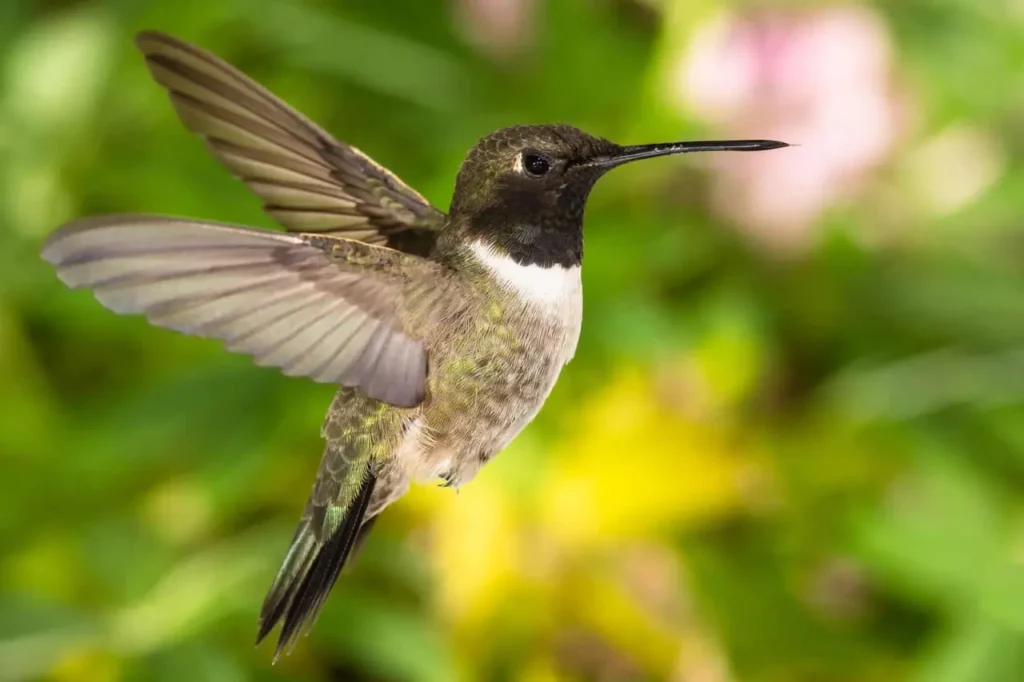
The Black-Chinned Hummingbird is known for its migratory nature. During the breeding season, it can be found in western North America, including parts of the United States and Mexico. As winter approaches, these hummingbirds embark on a remarkable journey to their wintering grounds in Mexico and Central America, where they find more favorable conditions for survival.
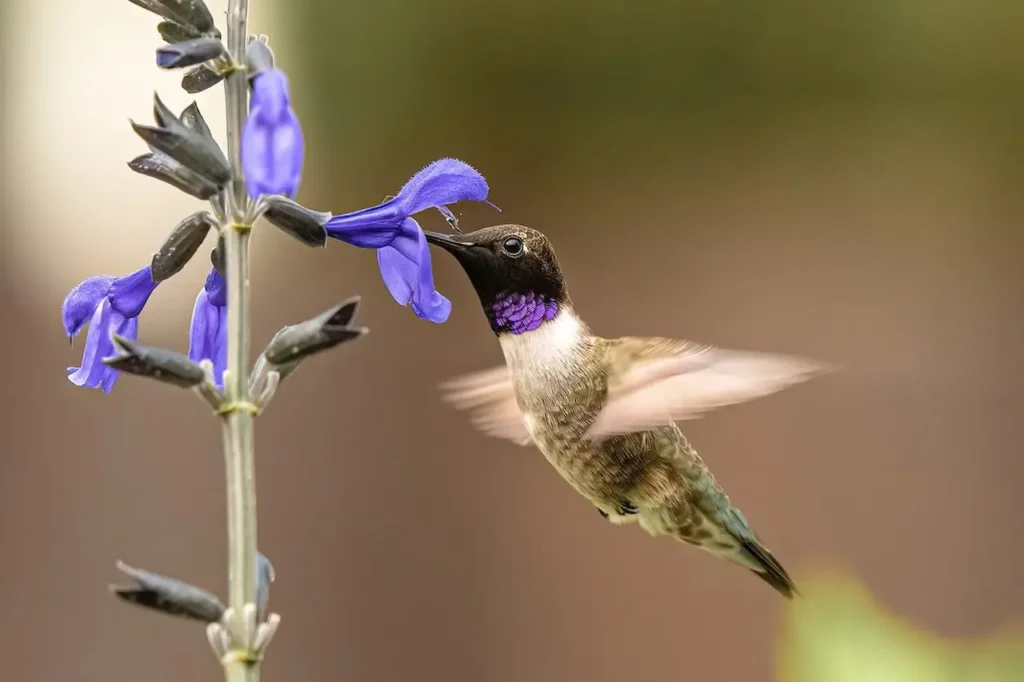
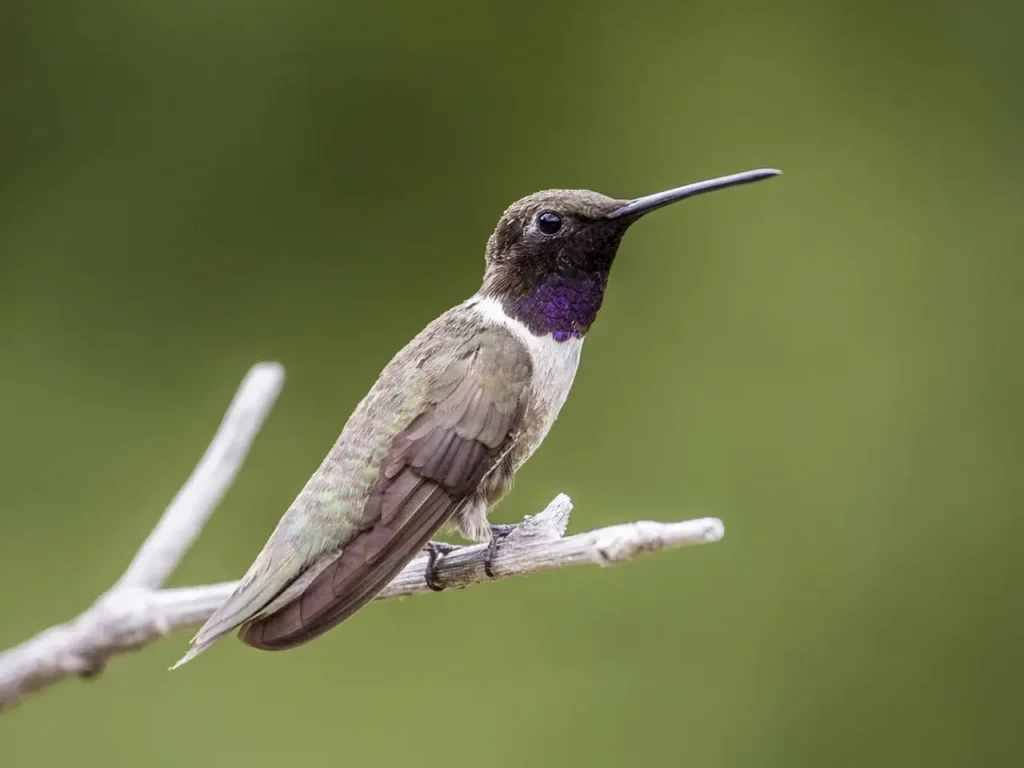
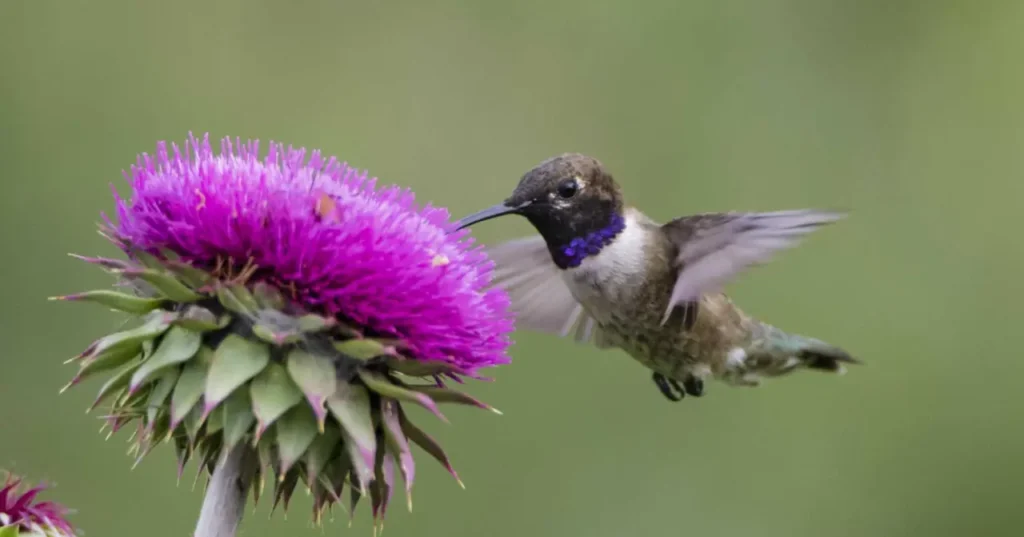
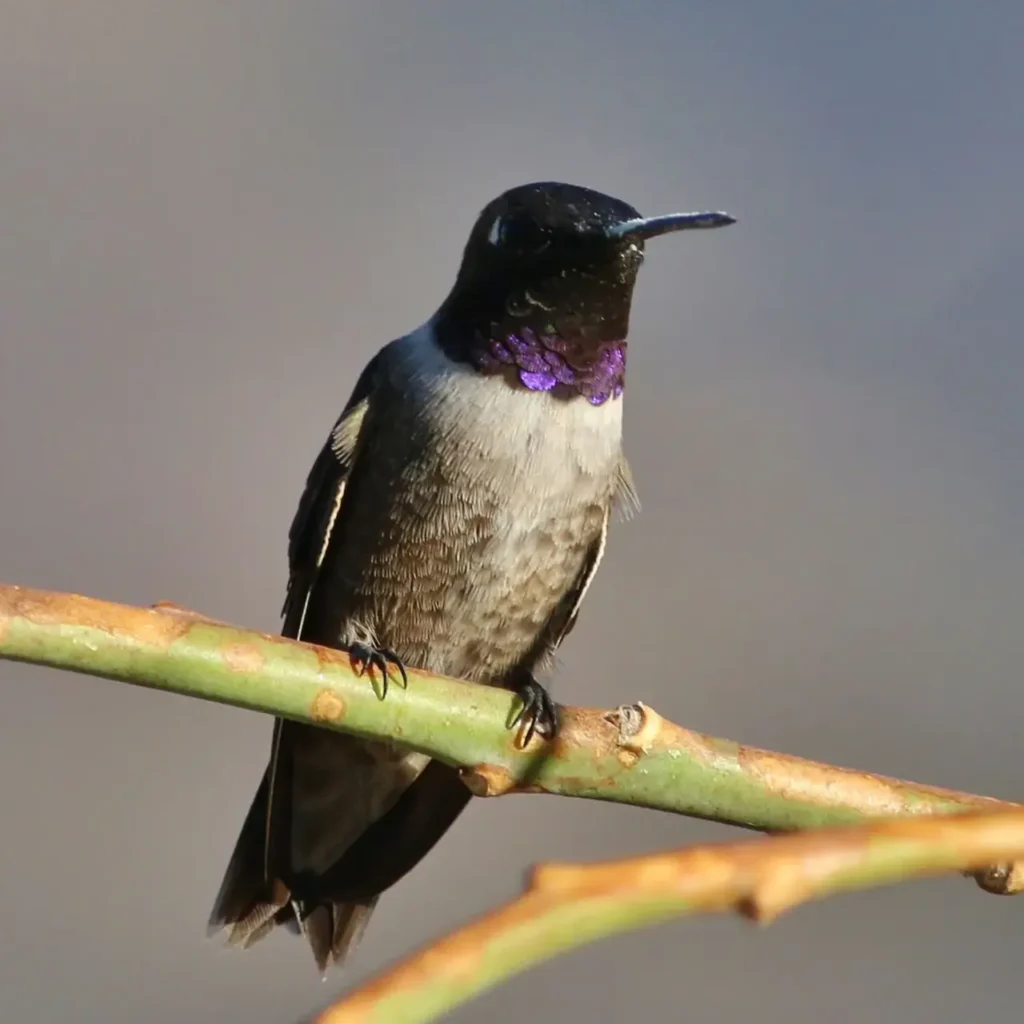
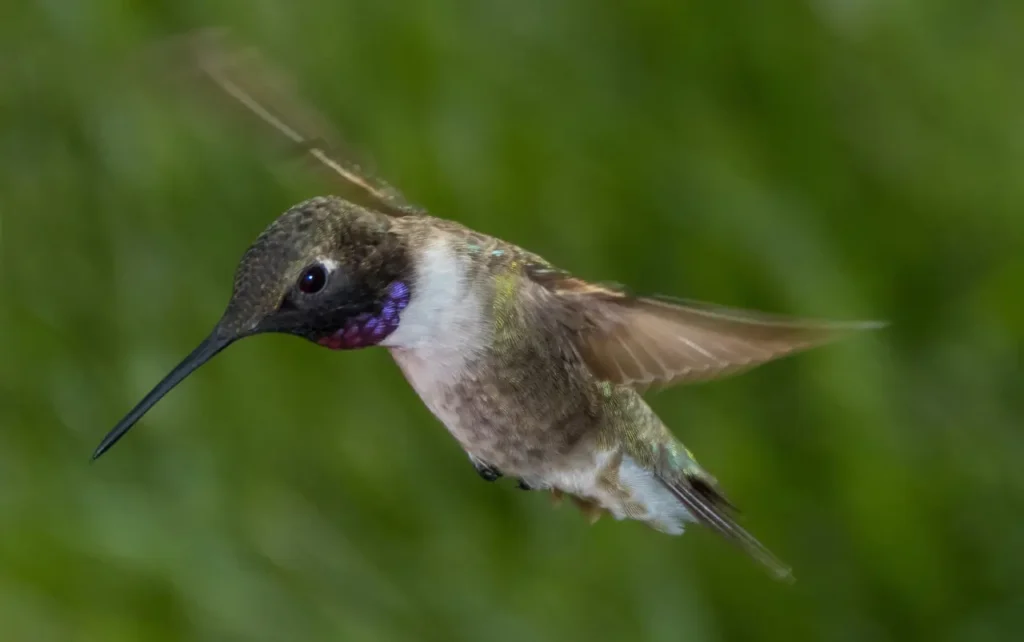
The Black-Chinned Hummingbird, with its iridescent plumage, remarkable flight abilities, and important role as a pollinator, serves as a testament to the marvels of nature’s diversity. This jewel of the sky enchants us with its delicate presence and the magic it brings to gardens, forests, and landscapes. By observing and appreciating the Black-Chinned Hummingbird’s unique characteristics and behaviors, we deepen our connection to the natural world and gain a greater understanding of the intricate web of life that surrounds us.
